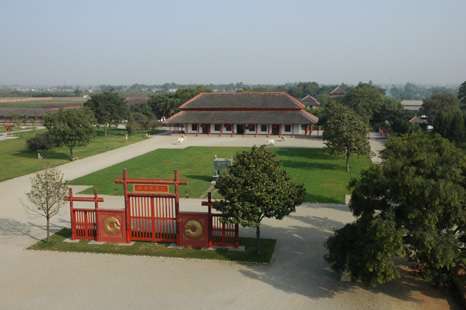June 19, 2017 report
Skeletal tests suggest sacrificial victims during Shang Dynasty were held for a time

(Phys.org)—A team of researchers from Canada and China has found skeletal evidence of sacrificial victims during the Shang Dynasty being held for a period of time before being killed. In their paper published in Journal of Anthropological Archaeology, the group describes their chemical analysis of bones from 68 sacrificial victims from Yinxu—the Shang capital.
Prior research has shown that there were a large number of human sacrifices during the Shang Dynasty, which ran from the 16th to 11th century BC in what is now modern China. Also, some research has suggested that many of the victims were captives from wars. In this new effort, the researchers have found evidence showing that the bones of the victims were from elsewhere, but lived locally for several years before they were killed.
Sacrificial victims were buried in various places, one of which was the royal cemetery in Yinxu. The researchers note that prior research showed that victims fell into two classes, "rensheng" and "renxun"—the former were generally mutilated and buried in mass graves while the latter were most often buried in more elaborate individualized ceremonies. The skeletal remains the group studied all represented the rensheng group, except in one case. As the team notes, normal testing of ancient peoples to learn more about their diet and geographic origin involved testing the teeth. In this case, that was not possible, because the victims were all decapitated. Instead, the team studied isotopes in their bones. That allowed them to infer the diet of the victim over the course of a lifetime.
In looking at the victims, the researchers found that they were not from the same areas as the locals—their large bones showed evidence of a different diet for most of their life. But smaller bones such as ribs indicated that they had lived in Yinxu for several years before they were killed. This, the researchers suggest, offers evidence that the victims were likely captured in wars and then were used as slaves before they were killed. It also suggests that the victims were kept as a store of sorts, allowing the king to call for sacrificial rituals even during times of peace. The researchers also noted that the diet of the victims was substandard during incarceration, offering further proof that they were used as slaves.
More information: Christina Cheung et al. Diets, social roles, and geographical origins of sacrificial victims at the royal cemetery at Yinxu, Shang China: New evidence from stable carbon, nitrogen, and sulfur isotope analysis, Journal of Anthropological Archaeology (2017). DOI: 10.1016/j.jaa.2017.05.006
Abstract
The practice of ritual killing, using both human and animal subjects, was prevalent in early Bronze Age China. This study addresses one key archaeological question that concerns the social roles and geographical origins of these human victims. Although oracle bone inscriptions from the site of Yinxu mentioned that many of these victims were war captives, little archaeological evidence could support or confirm this assertion. Using stable carbon, nitrogen, and sulfur isotope analysis, we reconstructed and compared the dietary practices of 68 sacrificial victims with those of 39 local residents from Yinxu. In addition, for 30 of the sacrificial victims, δ13C, δ15N, and δ34S values from two different bone elements per individual were compared to look for evidence of migration. Our results suggest that these sacrificial victims were likely not local, but moved to Yinxu and adopted the local diet for at least a few years before being killed. This discovery has significant implications for understanding the various tactics used by the Shang kings to consolidate power over their subjects, including the display of violence through mass sacrificial rituals.
© 2017 Phys.org




















